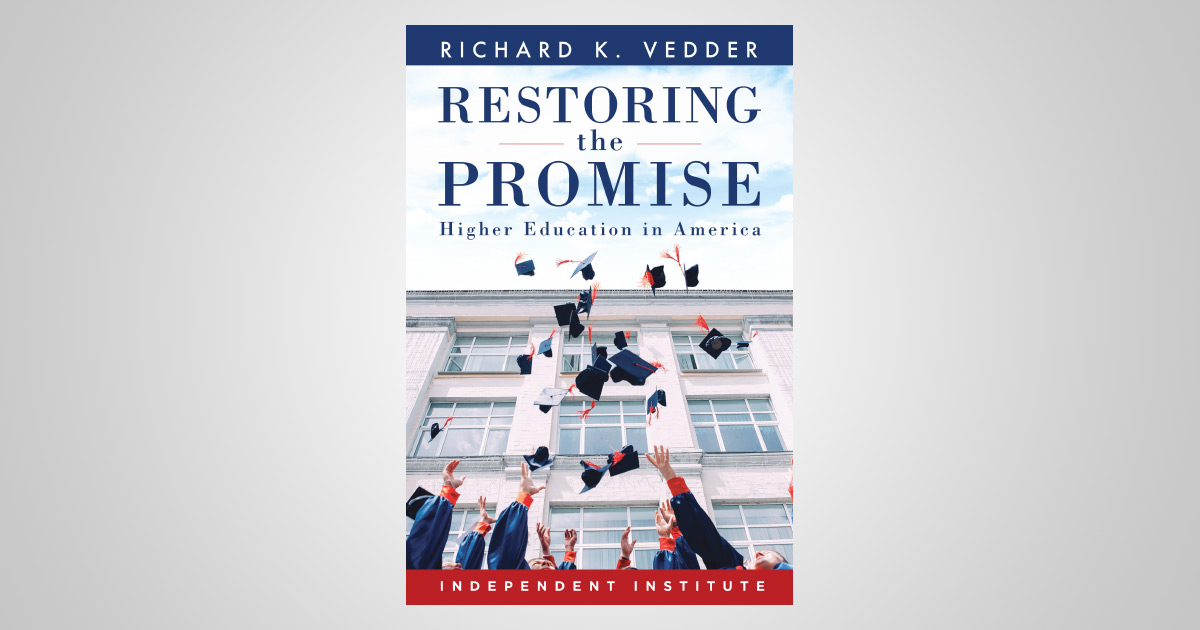Restoring the Promise: Higher Education in America, by Richard K. Vedder. Independent Institute, 416 pages, $28.95
Richard Vedder keeps a post-it note in his office: “Never have so many spent so much for so long learning so little.” When Winston Churchill spoke the words on which Vedder’s witticism is based, only 5% of Americans had a college degree, and colleges inculcated a spirit of civic pride and noblesse oblige. Today, more than 50% of Americans have attended some college, and these institutions have become a breeding ground of entitlement and resentment.
In Restoring the Promise: Higher Education in America, Vedder, a distinguished emeritus professor of economics at Ohio University, does not provide a roadmap to restoration so much as a catalogue of the ways in which higher education has become a bad bargain. He describes a “triple threat”: 1) college costs have risen dramatically; 2) students don’t seem to be learning much of anything; and 3) only half of the small majority who graduate find jobs that require their credential.
Why have college costs risen? To hear professors and their progressive allies tell it, because the value of college professors has risen, even as the subsidy state universities receive from taxpayers has fallen from about 50% to under 30% of total revenues in the past four decades. Nonsense, says Vedder. Colleges have bloated up on bureaucrats and spend an ever-decreasing share—now about one third—of their expenditures on instruction. And the taxpayers’ subsidy for universities has actually risen substantially, just not as fast as the explosion in college expenditures.







